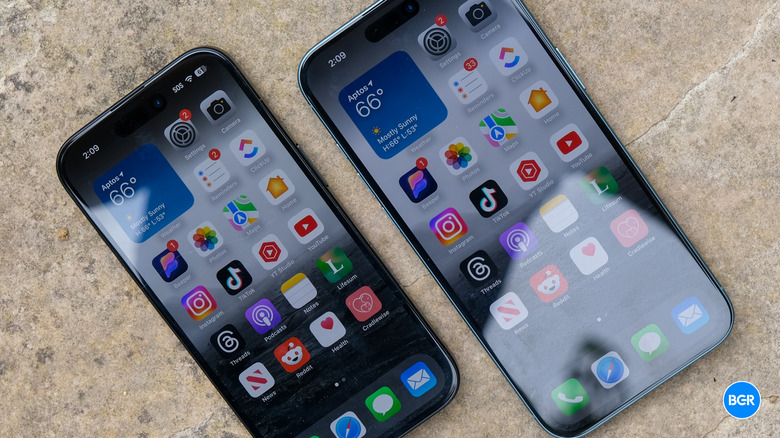Here's Why The iPhone 17 Might Get A Major Display Upgrade The iPhone 16 Lacks
iPhone 16 or 16 Plus owners might not like all these iPhone 17 rumors claiming the base iPhone 17 model and the iPhone 17 Air will support 120Hz refresh rate (ProMotion).
It's the one feature so many people want from Apple's cheaper iPhones, one that buyers have been waiting for years. Some of them buy the iPhone Pro or Pro Max phones solely for ProMotion.
They might think Apple keeps ProMotion exclusive to the more expensive models to make more money. Nobody would blame them considering that many mid-range Android phones feature displays that support 90Hz refresh rates or the full 120Hz.
But the real reason Apple hasn't brought ProMotion to the non-Pro iPhone 16 models but plans to do it with the non-Pro iPhone 17 versions isn't just about upselling the Pros. It's also about something not all iPhone buyers think about: Apple's complex supply chain and the availability of screen supply that matches its massive needs.
A new ETNews report says that LG Display increased its smartphone OLED production plan for 2025 to mid-to-late 70 million units, up from 55 million in 2023 and 70 million units this year.
LG will supply LTPO OLED panels to Apple, including the iPhone 17 models. Those LTPO OLEDs make the iPhone's dynamic 120Hz refresh rate possible. It's the screen tech Apple uses inside iPhone Pro models to ensure battery life doesn't take a hit.
The report says that only LG and Samsung Display have been able to manufacture LTPO OLED panels according to Apple's specifications for the iPhone. BOE's LTPO OLED tech isn't up to standards, so the Chinese screen maker is left out of the iPhone 17 supply.
As a result, both LG and Samsung will increase the LTPO supply for the 2025 iPhones. That's why LG decided to increase OLED production for the year.
There's another important detail in the report. ETNews says that LG is supplying OLED panels for the iPhone 16 series without production issues, which is why LG is able to increase production to satisfy Apple's needs.
What I'm getting at is that Apple may have wanted to transition all its iPhones to LTPO OLED tech that supports ProMotion well before the iPhone 17 series. It just didn't have enough supply. Samsung, LG, and BOE are the only OLED panel makers for the iPhone. The latter can't match the quality of its Korean rivals, and LG has steadily increased its output over the years.
Some people may still say that Android vendors ship mid-range products with 120Hz panels. But the comparison isn't exactly fair. Apple sells well over 200 million iPhones yearly, up to 40% of which are the newest generation models. Therefore, Apple needs well over 200 million LTPO OLED panels a year.
The iPhone 16 and 16 Plus will account for tens of millions of sold smartphone units during their lifetime. The same goes for the iPhone 17 and 17 Air. Flagships like the Galaxy S24 might sell around 30 million units annually, but that wouldn't match the number of base iPhone models Apple sells every year.
Mid-range Android phones with 120Hz panels probably can't match the yearly sales figures for the non-Pro iPhones.
Finally, not all the devices that support 120Hz displays get the best possible LTPO OLED panels. Remember that Apple's iPhone screens are always praised for their quality. Apple uses top-of-the-line expensive screens that are not available to all smartphone vendors.
Apple's supply ecosystem is incredibly massive. The company has to ensure that parts meet its standards and that suppliers can manufacture them in the large numbers it needs. That also means hitting the cost points Apple needs to keep iPhone prices steady and maintain profit margins.
That's probably why the cheapest iPhone 16 model lacks ProMotion support and why the iPhone 17 will get 120Hz screens.
